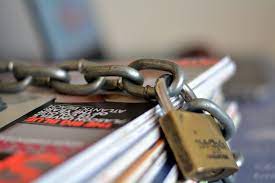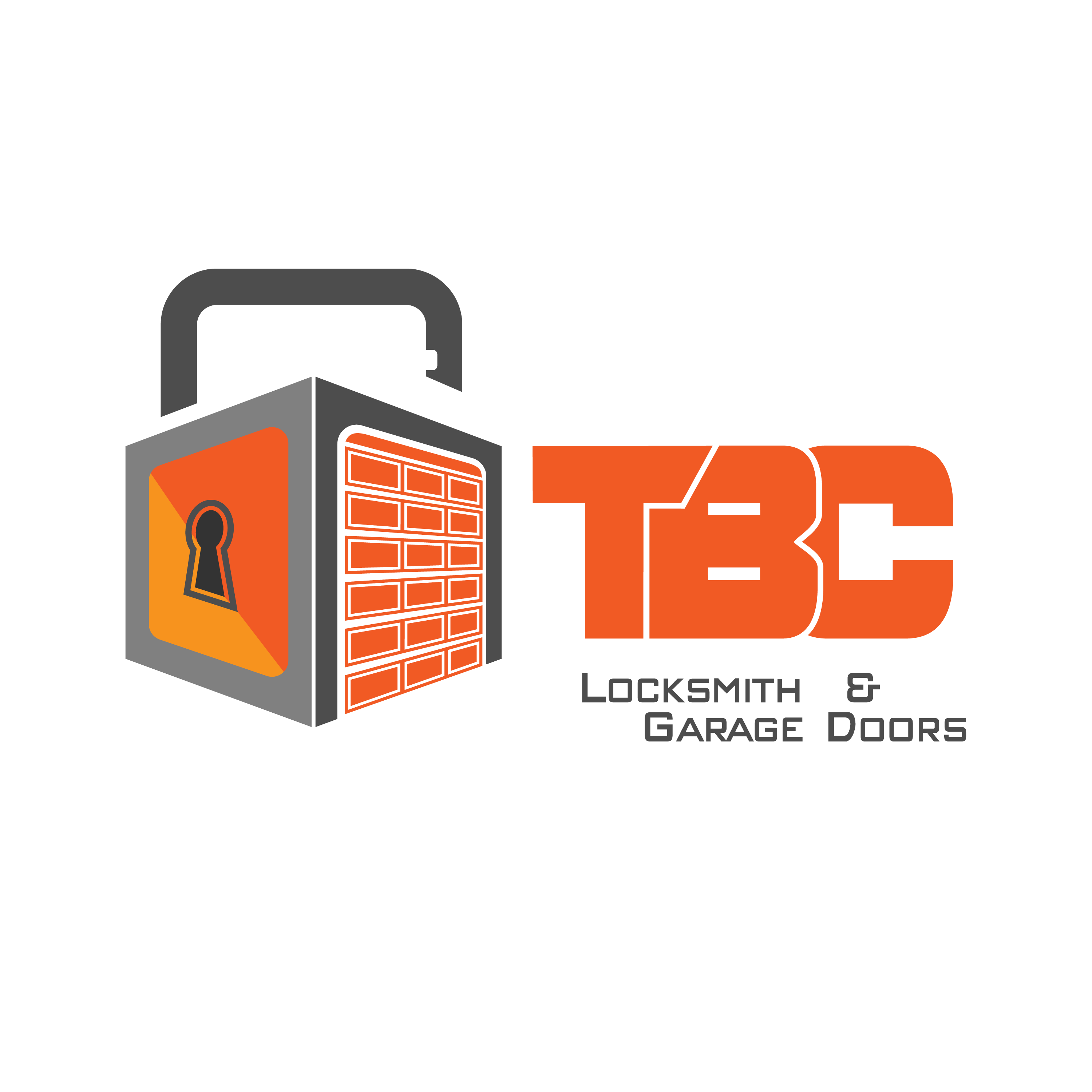
For many homeowners, getting a padlock is serious business. You need to ensure that your valuables are safe at all times, and a padlock is one of the ways to make sure of this. Besides regular lock installation, choosing a padlock to keep your property safe is another option to explore.
In this article, discover everything you need to know about padlocks, how they work, what material they are made from, and so on.
What is a padlock?
A padlock is a detachable or portable lock with a curved shackle, allowing it to pass through rings or other loops to lock. It is used to fasten two things together and can be secured.
Is there an unpickable padlock?
Many companies love to market their padlocks as “unpickable." The truth is, there is no unpickable padlock. To the trained eye, such as a professional locksmith, any padlock can be picked pretty easily. Although it is undeniable that some brands are stronger or offer more security than others, every padlock can be picked.
To be on the safer side, consult a locksmith Toronto and consider other methods of reinforcing security and try to put your valuables away discreetly in a safe place, whether you have a padlock or not.
How do padlocks work?
A padlock is made of different parts. All these parts work together to ensure that your padlock secures your property. The parts of a padlock include:
Shackles
Shackles are the u-shaped feature on the top of the padlock. They fit into the notches to form part of the lock mechanism.
Notches
To lock a padlock, each end of the shackle needs to be aligned with the hole in the lock body. Once you apply pressure, you will feel the internal locking mechanism click into place once it aligns. Inserting the right key into the keyhole at the bottom of the lock body and rotating it causes the padlock to unlock.
Plug
Once the key is turned, it will cause the plug to rotate. Plugs have several holes in the top, and each hole contains a small metal cylinder called a key pin. Every key pin is a different height, corresponding to the profile of the key.
Other parts of a padlock include:
- Key pins
- Chambers
- Pin
- Shear line
- Latches
- Springs
- Arm
To open a padlock, the key needs to be inserted into the plug. The key pins will rest in several holes in the plug and move up and down to follow the profile of the key. Once the correct key is inserted, then the keys will align at the top of the lug. This will push the driver pins out of the plug holes into their respective chambers. The springs ensure that the driver pins will be forced into the holes if no key or the wrong key is inserted.
Once all the pins are cleared, the key can rotate the plug. At the end of the plug, there is a cam situated which also rotates with the plug. This causes the arms of the two latches to connect. The latches are pushed out by a spring, pushing the arm against the cam while also pushing the latch into a notch on the shake, stopping the lock from being opened without a key. Once you have the correct key inserted, the plug rotates freely, causing the cam to rotate and pull the latches inward to release the shackle. Springs within the shackle chamber push the arm outwards, prompting the lock to release. A spring within the shackle chamber pushes the arm outward, releasing the lock.
What materials are padlocks made of?

Padlocks can be made from different materials. However, you must pick one made out of material guaranteed to serve you for a long time. Some of the materials padlocks can be made from include:
Solid Brass
Solid brass is a very durable material for making padlocks. If you need an all-rounder padlock, one made from solid brass is your best bet. They are affordable and weather-resistant, placing them above smart padlocks.
Laminated Steel
If you need a heavy-duty padlock, laminated steel is the best choice on the market. Laminated steel padlocks can withstand almost every form of heavy physical abuse.
Stainless Steel
Stainless steel padlocks are long-lasting waterproof padlocks. They ensure the highest level of safety and are the most common type of padlock on the market.
There are also other materials padlocks are made from, such as aluminum and chrome-plated zinc.
What are the different types of padlocks?
There are various types of padlocks for you to choose from. They include:
Smart Padlocks
Smart padlocks are Bluetooth activated and require an app on your phone to be opened. These types of locks allow you to use a code, along with others, to open the lock.
Smart locks do not require any physical key, meaning you do not have to deal with lost keys anymore. One of the upsides of these types of padlocks is that they let you provide temporary access to certain people for stipulated periods.
Combination Padlocks
These types of padlocks are typically used with luggage or lockers. Combination padlocks eliminate the need for a key. They are designed like old suitcase locks and open by spinning a dial in the right sequence. They make use of the same technique as a heavy-duty padlock, so you do not have to make use of keys anymore. However, you must ensure nobody sees your pin. Your pin will grant access to the combination padlock in place of a regular key.
Keyed-Alike Padlock
Keyed-alike padlocks are the solution for people who find it difficult to keep an eye on their keys. If you are always misplacing a key, this is the padlock for you. All you need is one key to open all the padlocks which have been keyed alike.
Straight Shackle Padlocks
One common design of padlock on the market is the straight shackle padlock. It is also known as a shutter padlock. Straight shackle padlocks provide extra protection to your doors and other locked objects. Most shipping companies and warehouses make use of the straight shackle padlock as the storage unit padlock.
Round Shackle Padlocks
Round shackle padlocks are also known as discus. They have around the circumference and are incredible when it comes to ensuring security.
The round shackles padlock is not spring-loaded, making it impossible to open from drilling the keyway. The body of this padlock will not come in a solid form; you will often find two metal cases positioned in two opposite directions. The two sides of these curved shackles are joined to the two metal cases.
Can a padlock be cut with bolt cutters?
You can cut a padlock with bolt cutters. It would be best if you began by picking the best place to cut. Most times, the hasp is the best place to start with locked doors. The hasp is where the padlock’s steel shackle is looped. Hasps are usually made of unhardened metal, resulting in them being very thin. Their density makes it a lot easier to cut, enabling the shackle to slide out.
If you cannot get a firm grip on the hasp, you might consider cutting the padlock itself. Your best bet is to go for the body of the padlock. This body is usually made of brass and is easier to cut through than the hardened steel the shackle loop is made of.
The next thing you need to do is position the jaws of your bolt cutters. Like with cutting metal cable and chain, you need to deeply grasp the padlock or the hasp to maximize the cutting force. A strong grip will also help you avoid the object slipping out of the bolt cutters.
Repeatedly take “bites" with the bolt cutter at the padlock body or the hasp, which should cause the padlock body or hasp to give way after sustained pressure. Doing this will free the shackle, unlocking the previously locked door.
Can I unlock a padlock without the key?

The short answer is yes. You can unlock a padlock without the key. Here are a few steps you can take if you need to unlock a padlock without the key.
Step One
If you have a pen or a lock picking set, begin by picking the lock. Hold the lock firmly in place with your left hand and begin with a round hook pick tool or the metal pocket clip from a pen.
Step Two
Take out the pocket clip from the pen and insert the lock picking tool or the round hook end of your pocket clip. Firmly insert the tool into the wide side of the keyhole. Make sure you only insert the hook part. Next, carefully rotate the tool or clip in a clockwise direction until it no longer moves. Hold this firmly in place with your left thumb.
Step Three
Bend the hair clip in half at the bottom or get an Allen key. Next, insert the clip of the key to the bend. Rotate the clip or key clockwise until the padlock clicks open.
Conclusion
Fixing your door lock problems does not have to be complicated. When you work with a professional, you can get exceptional service, even in the case of an emergency Contact TBC Locksmith for all your locksmith needs. We are an affordable locksmith company, and our team of skilled locksmiths offers top-notch solutions for car lockouts, homes, storefronts, offices, and so on.
Our services include installing new locks, top-notch door repairs, rekeying locks, and making new keys. All our locksmiths are licensed and insured, and we offer you affordable pricing with a 90-day guarantee.
